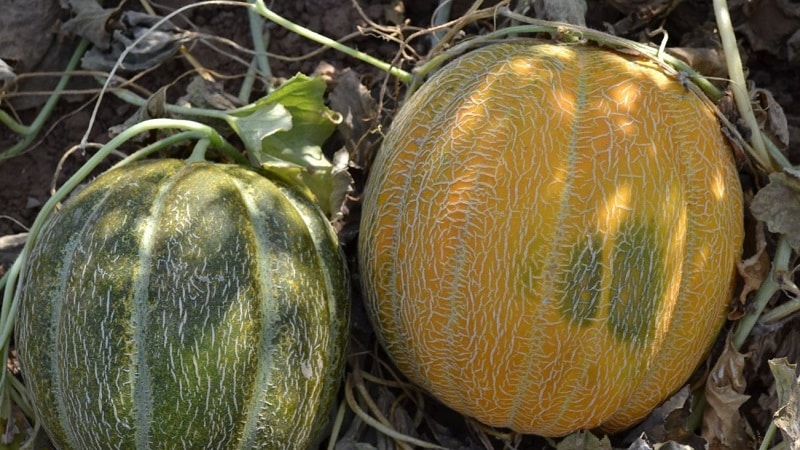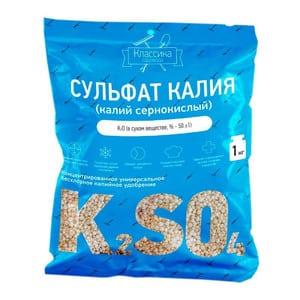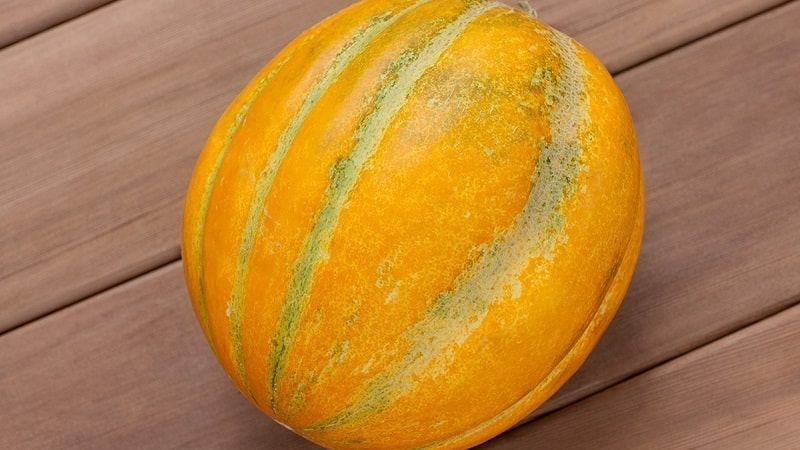What is good about the Ethiopian melon and why you should try growing it yourself
The Ethiopian melon variety is familiar to many gardeners. The juicy and sweet fruit is used to make juices, jam and fruit salads. The composition of melon is rich in vitamins and minerals, amino acids and essential oils.
It is not difficult to grow Ethiopian melon on your own plot, the main thing is to follow the growing recommendations from experienced gardeners. Let's take a closer look at the characteristics of the variety and the secrets of a rich harvest.
Description of the melon variety
The variety is grown both in greenhouse conditions and in open ground. The choice of location depends on the climatic characteristics of the region. Ethiopian ripens in just 70-80 days from the moment the seedlings are planted.
Distinctive features
The bushes are compact and have spreading vines. The leaves are rich green, heart-shaped. The variety is unpretentious in care, but the bushes love sunlight and warmth, so the crop is planted on well-warmed soil. The plant is resistant to common diseases and insect pests.

Composition, benefits, properties, calorie content
Melon contains B vitamins, dietary fiber, organic acids, and microelements. Moderate consumption of melon serves as an excellent prevention of many diseases.
The product replenishes iron deficiency in the body, strengthens bones and teeth, stimulates brain activity and improves memory. In addition, melon is actively used in folk medicine and cosmetology: nourishing face masks and lotions for getting rid of age spots are prepared from it.100 g of product contains only 33 kcal, which allows the product to be classified as dietary.
Interesting! In Rus', melon was used as a medicine for tuberculosis, rheumatism, and even mental disorders. A decoction made from milk and seeds of the product was especially popular. The product helped get rid of work complications gastrointestinal tract.
Fruit characteristics and yield
 Externally, the Ethiopian melon looks like a pumpkin. The fruits are round, slightly elongated. The surface is segmented, the color is yellow-orange. The peel is dense and elastic, the fruits are easily transported over long distances and stored for a long time.
Externally, the Ethiopian melon looks like a pumpkin. The fruits are round, slightly elongated. The surface is segmented, the color is yellow-orange. The peel is dense and elastic, the fruits are easily transported over long distances and stored for a long time.
Weight varies from 4 to 7 kg. The flesh is creamy, sweet and juicy. Productivity is stable, from 1 sq. m harvest about 6-8 kg.
How to choose fruits when purchasing
How to choose a ripe and tasty melon in a store or market? Pay primary attention to the appearance of the fetus. The melon must be whole, without damage or scratches. Ripe Ethiopian melon always has a pronounced sweet aroma, so it would be a good idea to listen to the smell of the product.
A light clap will help determine ripeness: if there is a dull sound, then the melon is ripe. In this case, the peel should not be too soft or hard.
Important! Don't buy melons near roads. Often in such places the fruits lie behind the ground, which means that through small cracks they can become infected with dangerous infections.
How to grow the Ethiopian variety yourself
The best vegetables and fruits are those grown on your own plot. Let's look at the basic rules for planting and caring for sweet honey melon.
Preparing seedlings
To obtain a rich harvest, melon is grown in seedlings.To do this, the seeds are disinfected in a solution of potassium permanganate or Bordeaux mixture. Disinfection destroys dangerous microbes and pathogens on the surface of seeds.
Plant seedlings in flower pots, plastic cups or plastic containers. Soil is poured into the container, small grooves 1-2 cm deep are made. Seeds are placed in each hole and sprinkled with soil on top. The seedlings are watered generously with warm water and covered with a thin film. Remove the shelter after the first leaves appear.
Melon seedlings are demanding of light, so summer residents advise additionally illuminating them with phytolamps. Water the seedlings as the soil dries, approximately once every 3-5 days. For watering, it is better to use a pipette so that the water gets directly under the root. To speed up the development of the plant, growth stimulants are added to the seedlings. Before use, you must carefully read the instructions and dosage.
Important! A week before planting seedlings in open ground, a hardening procedure is carried out. To do this, the seedlings are taken out onto the balcony for 2-3 hours. Every day the stay time is increased by 30-40 minutes. Hardening helps the sprouts to quickly adapt to external factors: weather changes, air composition, winds.
Landing
Seedlings are planted in the garden in early to mid-May. Before this, carefully dig up the beds and sprinkle them with dry sawdust. The best predecessors for planting melons are potatoes or cabbage. Bushes are planted according to the 70x150 pattern.
After the seedlings are in the ground, a layer of straw is placed on the beds. It retains moisture in the soil, which has a beneficial effect on the development of young plants. Immediately after planting, the melon is watered with warm, settled water.The next watering will be organized in a week.
Important! Melon prefers a mixture of loamy and sandy loam soils with neutral acidity. If the acidity is high, it is recommended to do liming before planting: pour a mixture of dry lime and wood ash onto the beds. An effective folk method creates ideal growing conditions for the plant.
Care
In dry and hot weather, the beds are watered once every 10-15 days. The optimal water temperature is about 20-22 °C. Water carefully so as not to wet the stems and leaves, since an excess of water on plants leads to infections and fungi.
From time to time, instead of plain water, an infusion of burdock leaves is used, it prevents the appearance of insect pests. Watering is stopped 2 weeks before harvest. Along with moistening, the beds are regularly loosened. Loosening retains moisture in the soil and saturates the roots with oxygen. Loosen the melons carefully so as not to touch the rhizome. The optimal loosening depth is about 5-7 cm.
Melon needs additional nutrition, so gardeners organize feeding. During fruit set, superphosphate or potassium sulfate is added to the ground. Mineral components improve the taste of melon and prevent diseases. In addition, attention is paid to foliar feeding: the bushes are sprayed with a solution of milk and iodine from a spray bottle. Treating bushes helps protect against insects and preserve the harvest.
Features of cultivation and possible difficulties
 As soon as the sixth leaf forms on the bush, it is recommended to pinch the top. 5 ovaries are left on each lash, the remaining shoots are removed. This procedure helps to increase the number of ripe melons and remove small unripe fruits.
As soon as the sixth leaf forms on the bush, it is recommended to pinch the top. 5 ovaries are left on each lash, the remaining shoots are removed. This procedure helps to increase the number of ripe melons and remove small unripe fruits.
In order for the lashes to grow in the right direction, they are first untangled from each other, then tied to wooden stakes. If melon is grown in a greenhouse, then the structure is ventilated daily using special vents. Fresh air is necessary for greenhouse plants, otherwise they will die due to increased humidity and stuffiness.
Particular attention is paid to mineral nutrition. It is important to avoid an excess of nitrogen and phosphorus substances, otherwise the bushes will wither and the leaves will become dry and yellow. Charcoal or ash will help correct the situation.
After some time, they will absorb the mineral components, and the nutritional balance of the plants will be restored.
Diseases and pests characteristic of the variety
Ethiopian melon is susceptible to powdery mildew. The causative agent of the disease is a fungus that actively develops during periods of high humidity. The disease manifests itself in the form of a snow-white coating on the leaves.
The fruits themselves stop growing, become hard and bitter. For preventive purposes, it is recommended to follow the rules of crop rotation and thoroughly disinfect the seeds before planting. If the bushes do get sick with dew, gardeners advise treating the beds with Topaz, Fundazol or Quadris.
In addition to dew, plants become sick with tobacco mosaic or root rot. The causes of infection are identical: improper care, excessive watering, lack of nutrients in the soil. An excellent preventative against all diseases is spraying with manganese or iodine. Their composition is harmless to humans and non-toxic to plants. Experienced summer residents recommend regularly inspecting beds and bushes for damage or external defects. The sooner the disease is detected, the better.
Important! In many regions, the melon fly attacks the beds. The pest is capable of destroying up to 80% of the entire crop. The insect lays larvae in the fruit, which develop and gnaw the pulp inside the melon. If the fly is not detected in time, the melon rots. In order to prevent the appearance of melon fly, the bushes are sprayed with a solution of copper sulfate.
Harvesting and application
 Melons are harvested selectively as the fruits ripen. Ripeness is determined by the sweet floral aroma and elasticity. The peel turns yellow and small cracks appear around the stem. Harvesting is recommended to be done in the morning or evening to avoid heat or rain. The fruit is picked along with the stalk.
Melons are harvested selectively as the fruits ripen. Ripeness is determined by the sweet floral aroma and elasticity. The peel turns yellow and small cracks appear around the stem. Harvesting is recommended to be done in the morning or evening to avoid heat or rain. The fruit is picked along with the stalk.
The melons are laid out on the bed and left for 7-10 days, turning them over every 3-4 days. In the future, the product is perfectly stored in wooden boxes filled with straw. The best places for storage are a ventilated and dry cellar, a balcony or loggia, a pantry.
Fresh and juicy melon perfectly quenches thirst; the fruits make excellent juices and cocktails. Cooks prepare fruit salads, mousses, jams and sorbets from it. A bright and appetizing melon looks great on any table and will decorate any picnic. Many people like to bake melon with the addition of cinnamon or mint. This dish is an excellent snack for those who are watching their figure.
Advantages and disadvantages of the variety
The Ethiopian variety has a lot of useful qualities. Thanks to its thick peel, it can be stored for a long time, rarely gets sick and can be easily transported to different distances. The taste of the product is excellent, and it is universal in use.
The cultivation procedure does not require special knowledge; the Ethiopian is easy to care for. It is cultivated both in greenhouses and in the open air.The variety has no significant disadvantages. Only occasionally are the fruits exposed to the melon fly.
Reviews
Why do summer residents and gardeners love the “Ethiopian” melon? Let's look at a few reviews from experienced vegetable growers.
Arina, Omsk: “I love sugar melons, and Ethiopian takes one of the leading places in my ranking. Beautiful ribbed fruits do not require special attention and do not get sick. I plant from seedlings and get an excellent harvest.”
Pavel, Penza: “I planted an Ethiopian for the first time and was pleased. The fruits set well, the yield was excellent. Watered only with warm water and fertilized with manure. I collected 9 large and fragrant melons, which I will store in the basement.”
Olga, Ufa: “The Ethiopian planted melon twice. The first time the harvest grew excellent, I was pleased with the sweet sugar taste. Last season the bushes became sick with downy mildew. I can’t understand the reason, I lost half the harvest.”

Read also:
Conclusion
Farmers prefer to grow the Ethiopian variety using seedlings. This way the plant takes root faster in the garden and adapts to the climatic conditions of a particular region. Sprouts are planted on the site in May, after the last frost. The Ethiopian loves nutritious and loose soils illuminated by the sun.
Water the plant at the root, using about 2 liters of warm water for 1 bush. Organic and mineral fertilizers help improve the quality of fruits. Melon makes delicious desserts, baked goods, juices and smoothies.In addition, the fruits are perfectly stored, which allows you to enjoy their taste and benefits for as long as possible.